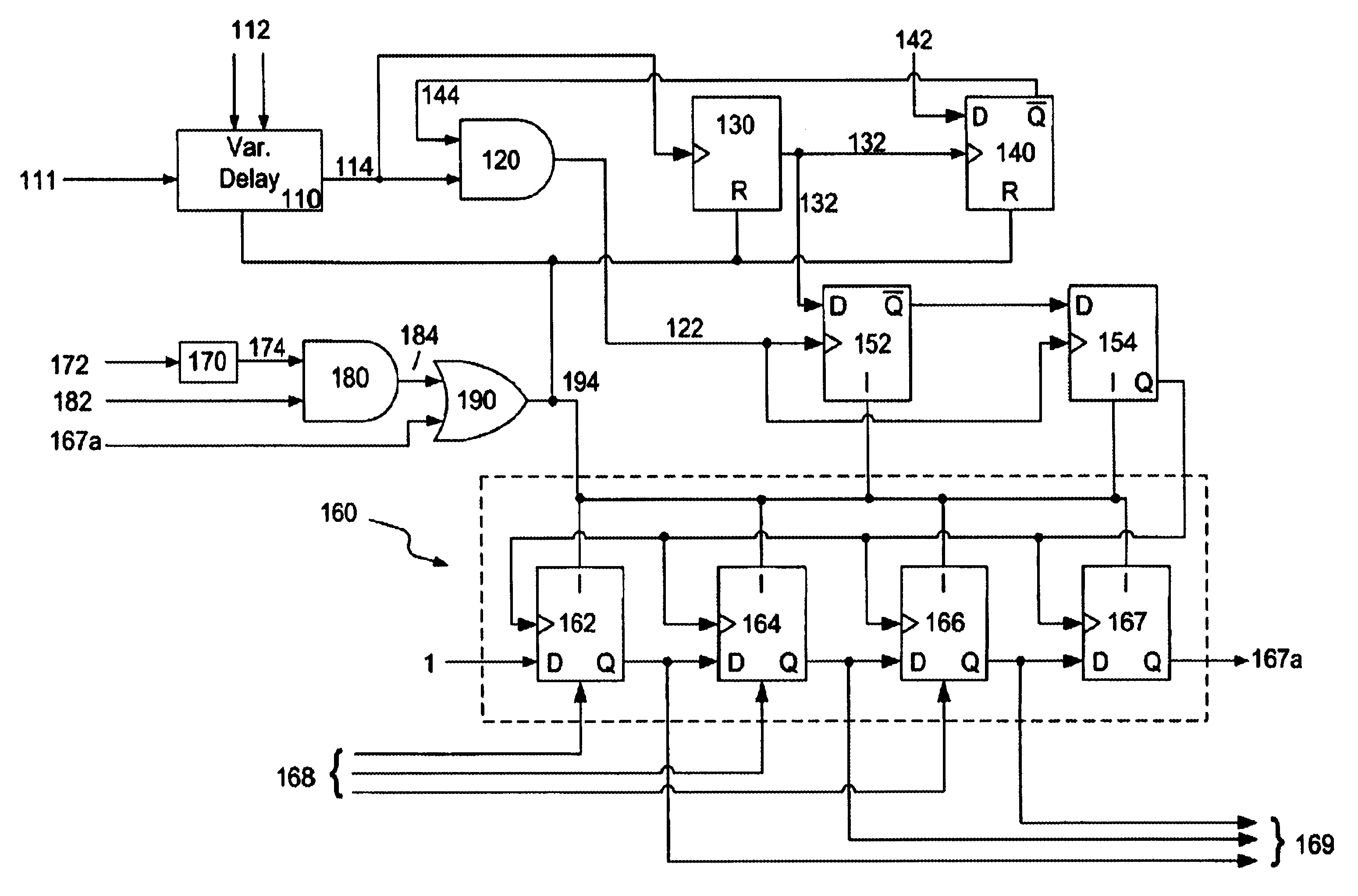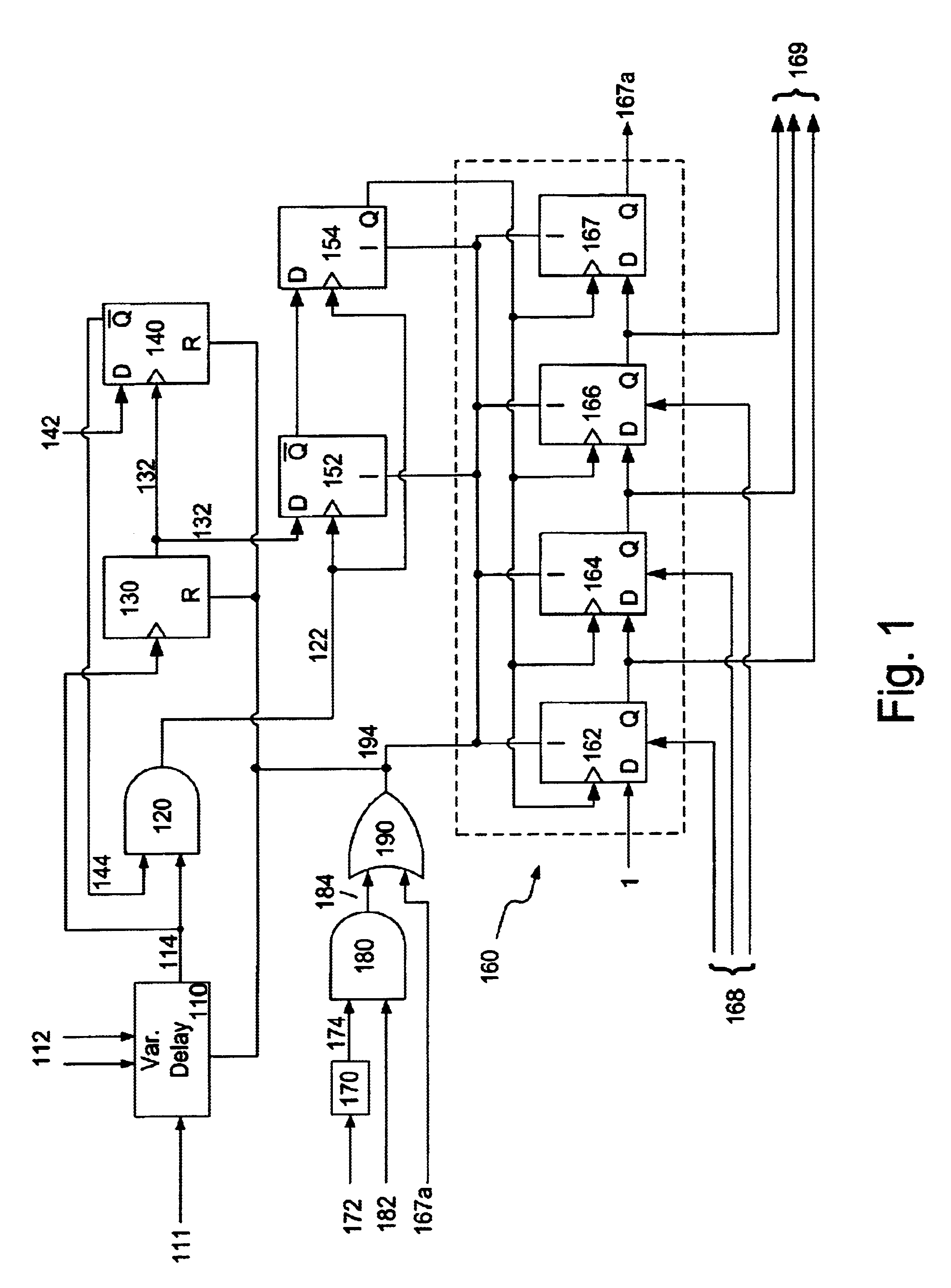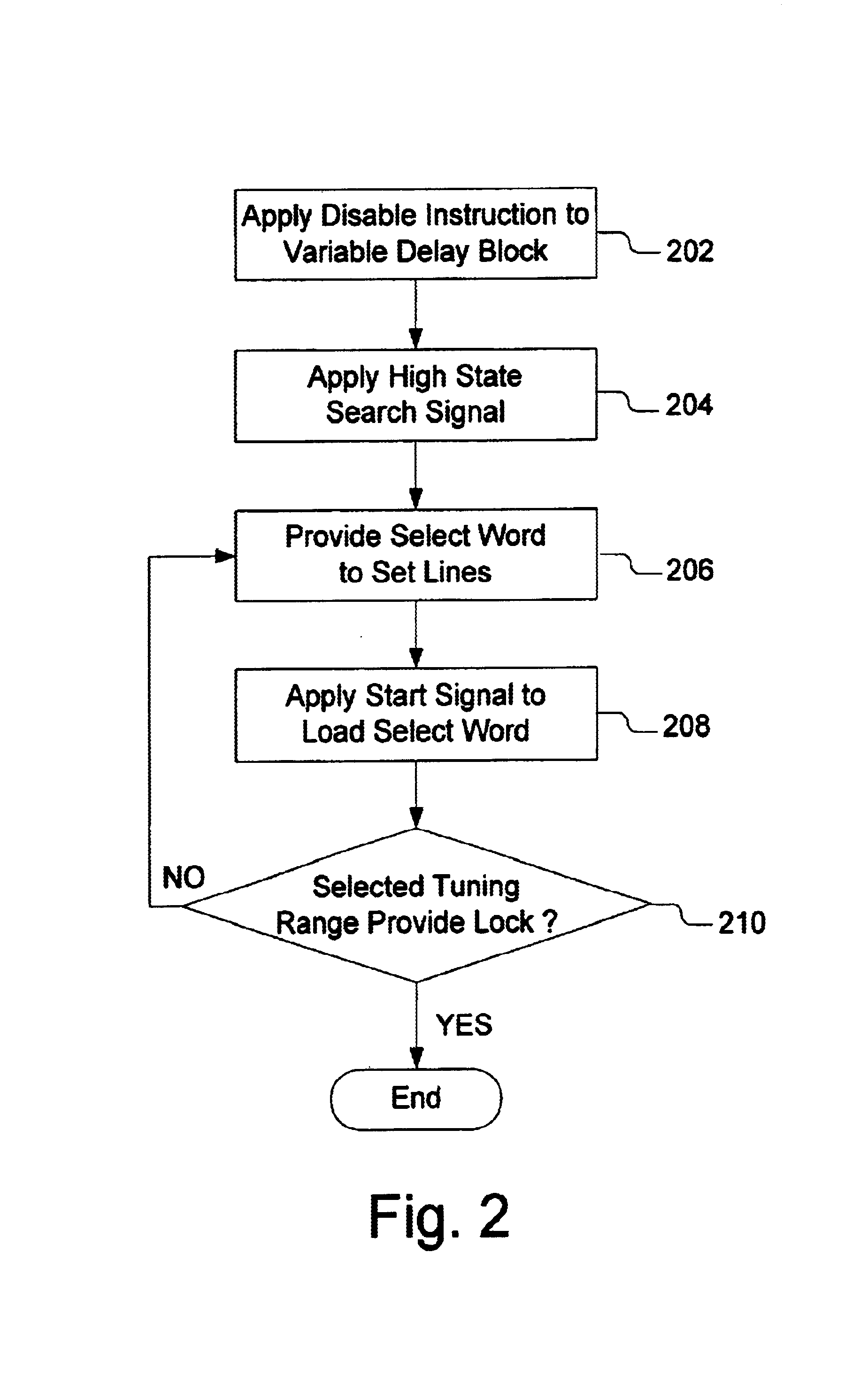VCO control circuit and method of operation
- Summary
- Abstract
- Description
- Claims
- Application Information
AI Technical Summary
Benefits of technology
Problems solved by technology
Method used
Image
Examples
Embodiment Construction
[0015]FIG. 1 illustrates a VCO control circuit 100 in accordance with one embodiment of the present invention. While the following description is presents the tuning circuit as being a VCO, those skilled in the art will appreciate that the tuning circuitry may alternatively be realized as an arrangement of capacitors, varactor diodes, inductors, or a combination of these components. Further, different tuning ranges may be provided by separate VCOs, by one VCO having different tuning ranges, or a combination of both.
[0016]In the illustrated embodiment, the VCO control circuit 100 includes a variable delay block 110, a first AND gate 120, a delay counter 130, lock detect flip-flop 140, flip-flops 152 and 154, a tuning range selector 160 comprising flip flops 162, 164, 166, and 167 collectively configured as a loadable serial shift register 160, logic gate 170, and second AND gate 180, and an OR gate 190. In the preferred embodiment, the aforementioned elements are photolithographicall...
PUM
 Login to View More
Login to View More Abstract
Description
Claims
Application Information
 Login to View More
Login to View More - R&D
- Intellectual Property
- Life Sciences
- Materials
- Tech Scout
- Unparalleled Data Quality
- Higher Quality Content
- 60% Fewer Hallucinations
Browse by: Latest US Patents, China's latest patents, Technical Efficacy Thesaurus, Application Domain, Technology Topic, Popular Technical Reports.
© 2025 PatSnap. All rights reserved.Legal|Privacy policy|Modern Slavery Act Transparency Statement|Sitemap|About US| Contact US: help@patsnap.com



